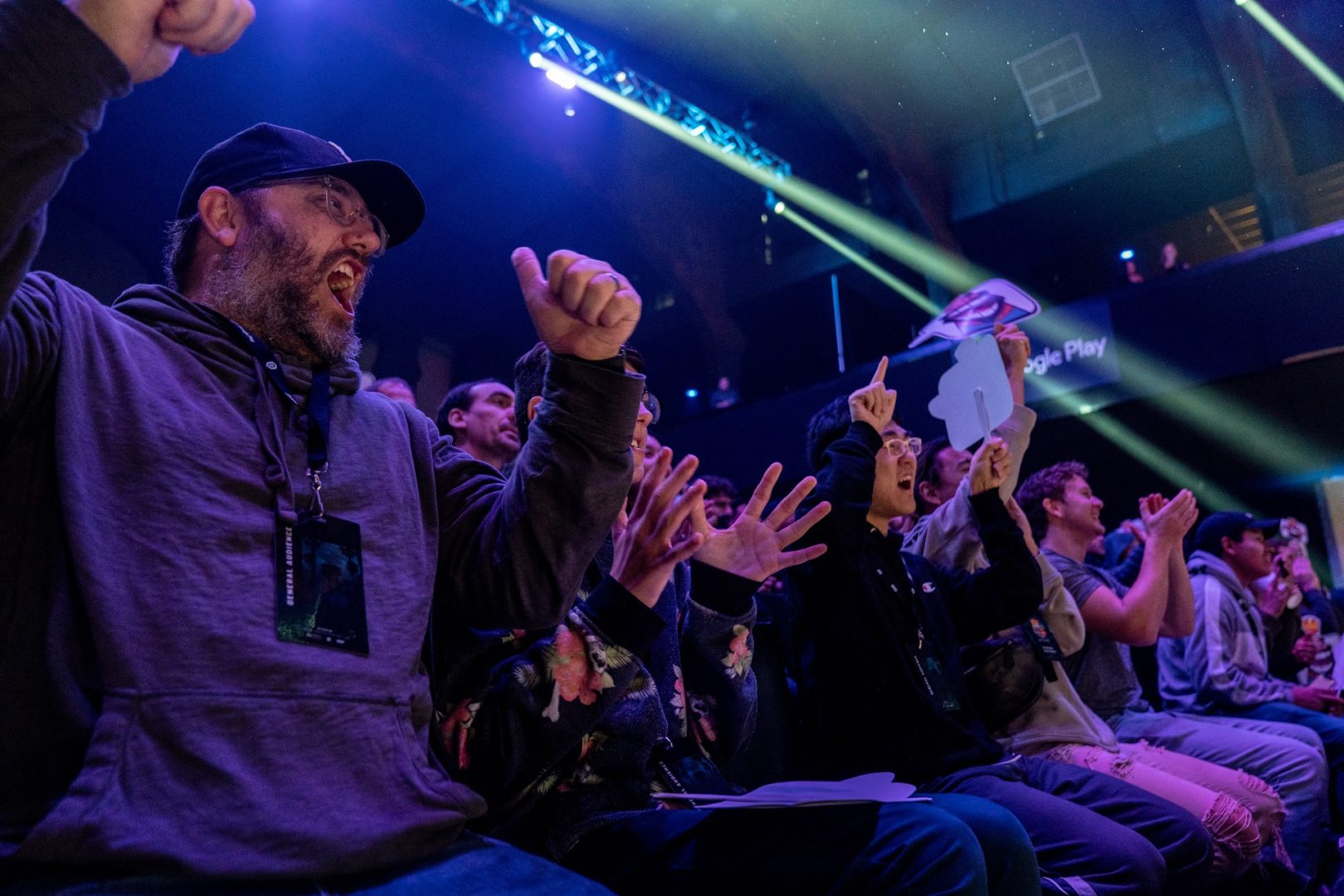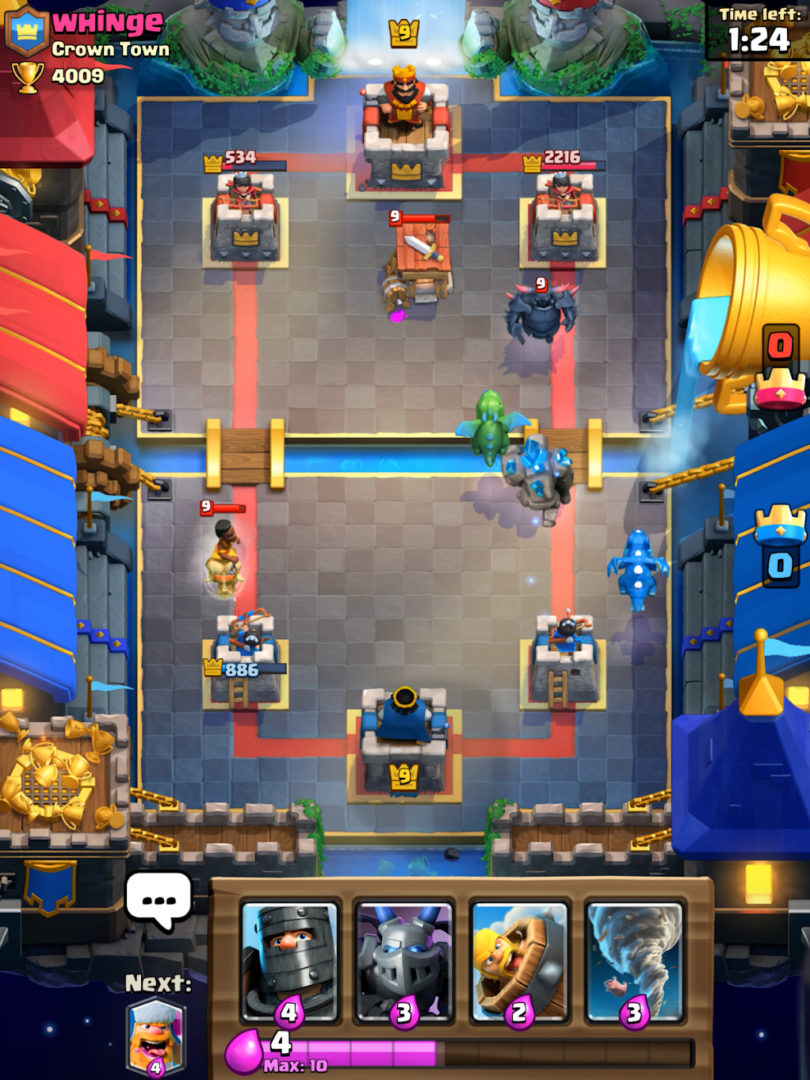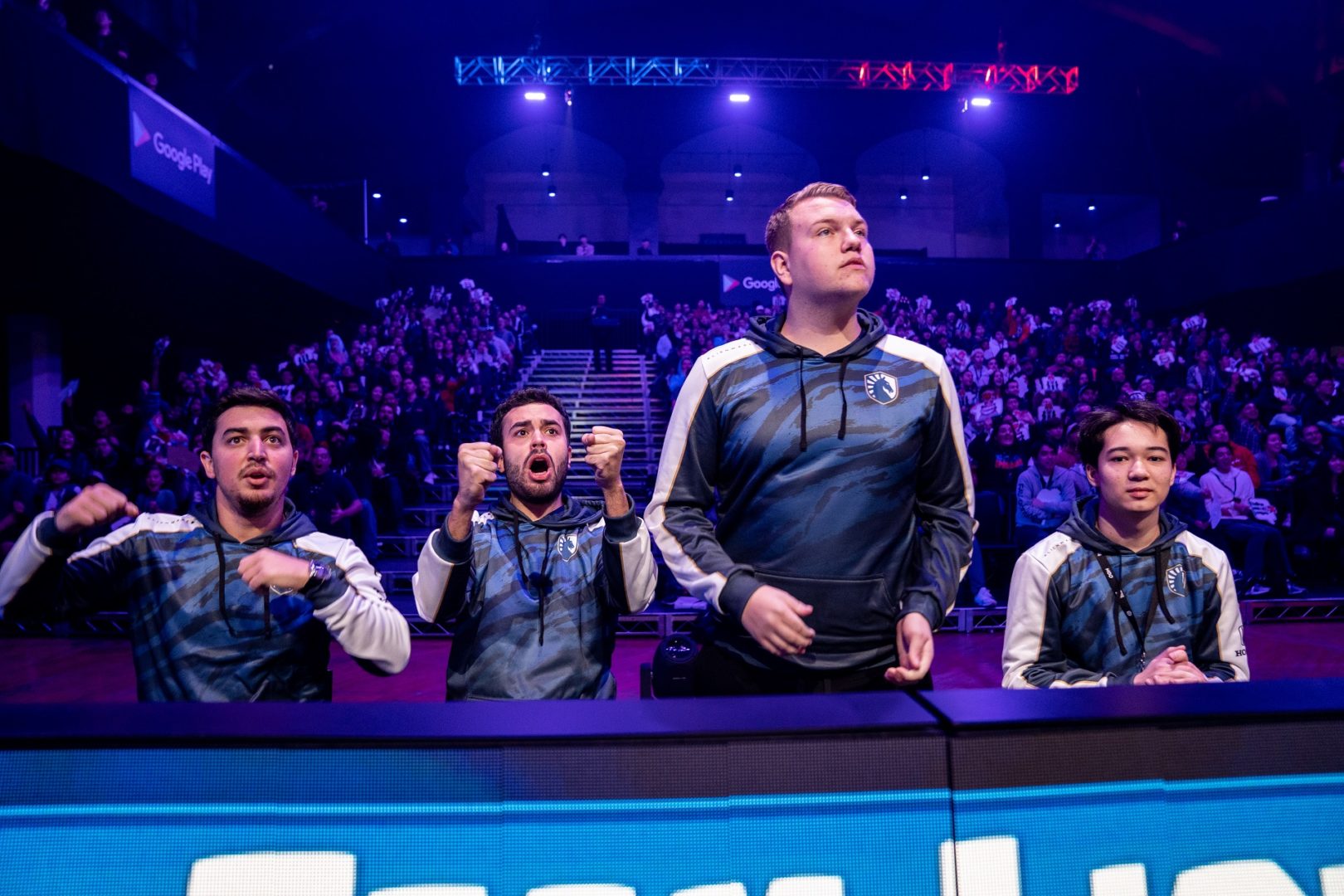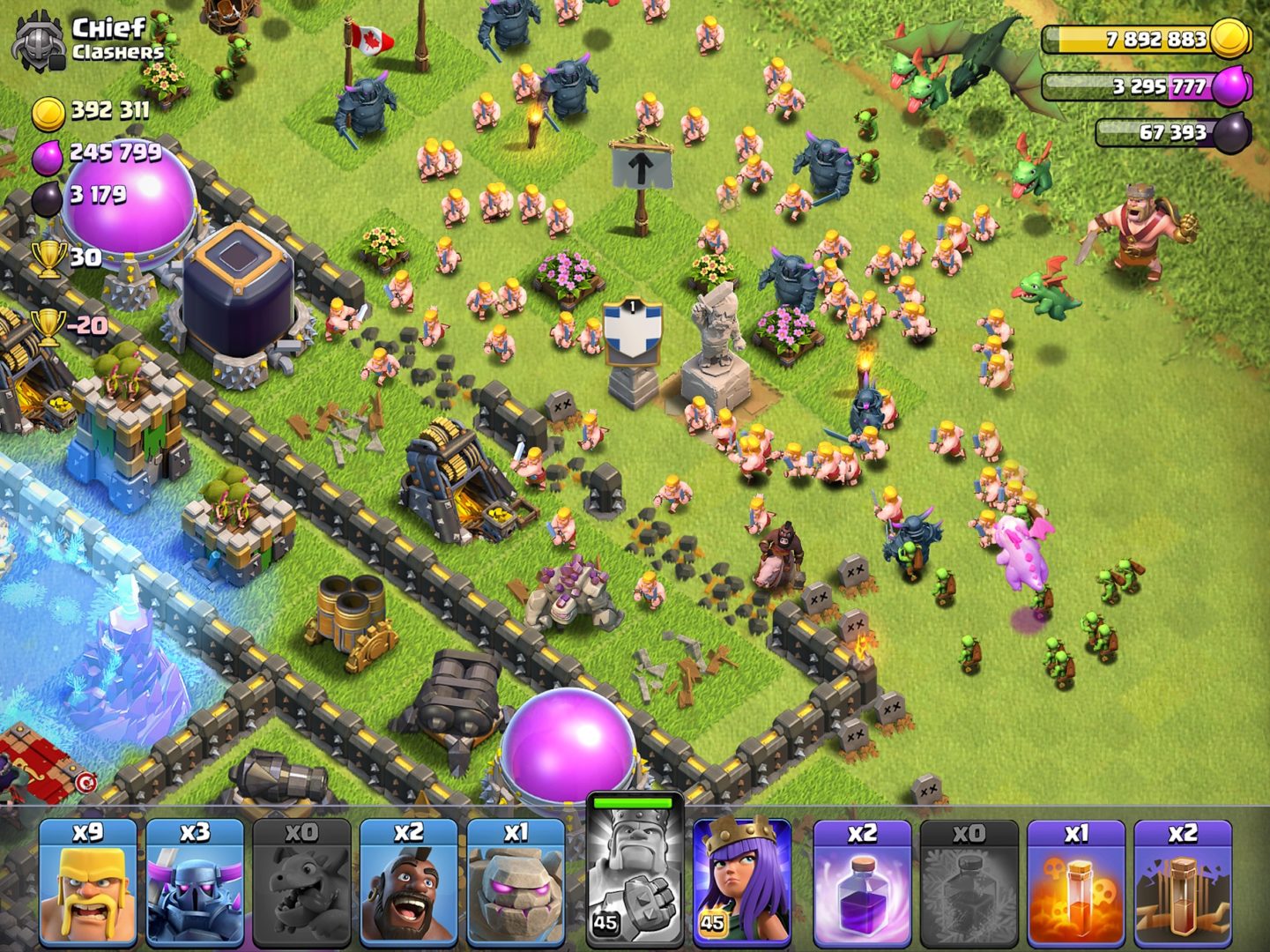The air in the venue becomes tense as the timer clicks down. The match is close, and no one knows who’ll clinch the victory and make it to the finals. Players launch desperate attacks back and forth, hoping that their next move will be the one that pushes their team over the edge to victory. The timer hits zero, and the audience falls silent. It’s still not clear who’s won as the game calculates the remaining HP. For two seconds, the audience, players, and commentators stare at the giant screen showing the action, waiting for the results.
Suddenly, the crowd erupts into a cheer that rocks the whole stadium—the winner has been decided, in such an even match that there’s only a 1 HP difference between the winner and the loser. The announcers are barely audible above the roar as they announce the winners and praise an incredible match. Both teams rush up to gather around their star players, one group to celebrate and the other to console. They know they’ve played to their best abilities and put on one of the most exciting shows of the day.
If you didn’t know any better, you might think this was an Overwatch League or Fortnite match at first glance. Instead of sitting in front of high-powered PCs and furiously clicking away, however, these top players were standing on pedestals, staring down, and swiping away on smartphones. The scene unfolded at the Clash Royale League World Finals, one of three competitive branches that developer Supercell has created for its mobile titles.
“It all came out great,” Chris Cho, Clash Royale’s league commissioner, told EGM after the finals. “I love the crowds and energy, as well as all the players really getting into it.”

For the few left uninitiated, Clash Royale is one of the biggest mobile titles of the past few years. Players face off in 1v1 tower defense battles, trying to take down one another’s units and towers. The esports league created around the game—conveniently titled Clash Royale League (CRL)—keeps this in mind, with a best-of-three setup that covers Clash Royale’s different modes. Players on teams switch off between rounds as everyone attempts to play to their strengths.
December’s finals marked the end of the CRL’s second year. Team Liquid, whose star player Surgical Goblin won the match described above, ended up taking the championship and the $150,000 prize.
Team Liquid faced its ups and downs before and during the tournament, from Egor’s standout performance in a knock-out round in the quarterfinals keeping the squad in the game, to Surgical Goblin almost not making it to the finals at all due to passport issues. The pressure was on for Team Liquid to perform, and they did so admirably.

One wouldn’t think that a free-to-play mobile title that makes money off microtransactions would translate well into a competitive esports league. Unlike games like Fortnite and PUBG, which limit microtransactions to cosmetic items, most of Supercell’s titles include microtransactions that affect actual gameplay. For example, in Clash of Clans you can pay to refill gold and elixir, which translates to being able to build your base bigger and faster than a player who doesn’t spend. Typically, that means they get stronger faster, and are able to compete against rival Clans more easily. This can have far-reaching effects on competitive play, whereas, say, dressing up like Ninja in Fortnite doesn’t.
But despite this challenge and an overall dearth of mainstream media coverage, the Clash Royale League has garnered a lot of attention from mobile gaming fans. The Shrine Auditorium in Los Angeles—which seats up to 6,300 people—was packed for the Clash Royale finals, and attendees were legitimately excited to be there, often playing their own rounds of Clash Royale during intermissions.
“I think we’re on the right path here,” Cho continued. “I think we’re going to improve and show a more evolved version of Clash Royale esports along with our other esports efforts.” The Clash Royale League is only in its second year, but Supercell is already expanding its esports reach beyond the one title. Brawl Stars held its inaugural tournament in November this year, and the tournament had a similarly positive response from the community. But unlike Clash Royale, Brawl Stars doesn’t have a fully fledged esports league.
“We had a world finals and we had a very short lead up to that. It’s something that was put together rather quickly,” explains Kim Jensen, who manages Brawl Stars’ esports programming. The finals were announced in August and then held in Busan, South Korea, in November. In spite of that, however, Supercell saw a positive response with the tournament. “We had good reception, we had solid viewership… and talking to players before and after the competition, they had a good experience.”

Of the Supercell titles for which the company has created a competitive tournament, Brawl Stars is the newest. Released in 2017, the top-down MOBAesque battler offers 3v3 and Battle Royale modes and in general lends itself well to the competitive environment of esports. Jensen and others saw the connection quickly. “Most esports titles are real-time action games. We very immediately thought, hey, [Brawl Stars] could be an esports game.”
Jensen is looking to expand Brawl Stars’ competitive reach in 2020, starting with monthly competitions that kicked off in January. “Through winning those competitions, players can get access to the World Finals at the end of the year.” It’s a different process than Clash Royale, which closely mimics other big esports leagues, but Supercell is experimenting with different formats for all of its competitive titles to see what sticks.
Regardless of Clash Royale’s and Brawl Stars’ success, one looming question remains: What about Clash of Clans, the mobile title that put Supercell on the map and remains the company’s most popular and most recognizable title to date? Surely that would make for a popular esport, wouldn’t it?
The thing is, Clash of Clans was originally released in 2012. The video game landscape was a very different place back then, with publishers and developers not ready to support the esports ecosystems the way they do today. Events like EVO and leagues for titles like Counter-Strike existed but did not get nearly as much attention as they do today. As such, Clash of Clans wasn’t really envisioned with or optimized for true competitive play.

Originally, it seemed like Supercell was okay with Clash of Clans being its own separate title, without an esports-style competitive aspect. However, over the years, the community started asking for features that led the company in that direction.
“It was never a prime directive to add esports to the game,” Clash of Clans community manager Darian Vorlick told EGM. “In about 2015, we added the feature where Clans could challenge each other. That allows the community to create all these community-based Clan War leagues.”
Players were then able to make their own tournaments and leagues, and many clans did so in earnest. But Clash of Clans had no ranking system in place for the Clan War leagues, and tournaments had no rewards for the winners other than bragging rights.
“A year ago, we introduced our internal Clan of War League,” Vorlick explains. The in-game league was a typical ladder format, but players responded really well to the feature. “We found that over 40 million players were engaging in this ladder system, and we realized there was a desire for this.”
Unfortunately for the game’s top-tier players, Clash of Clans will not be hosting huge esports seasons or official teams anytime soon, Vorlick said. “With Clash Royale, what [Supercell] did was create this Clash Royale League with salaries and team management. [With Clash of Clans], we kind of want the exact opposite route, where we wanted to maintain this very grassroots community feel.”
But no matter the approach that Supercell is taking with its esports leagues, everyone in charge conveyed the same idea: These efforts are for the community, first and foremost. Supercell is moving forward with these games’ competitive scenes less to chase the esports pie, and more to give fans what they want.
Of course, it also helps that these esports leagues and competitive tournaments are marketing on their own: These events garner attention, which leads to more downloads and more people playing. More people playing means there’s a good chance they’ll invest in microtransactions.
Whatever the motivation, though, Supercell has built a strong esports presence, one that looks poised to keep growing in the coming years. While PC and console players may be skeptical that a mobile game can support a full competitive ecosystem, Supercell has already proven it can make that happen. Does that mean we’ll be watching Clash Royale showdowns on ESPN someday soon? Will other mobile developers follow suit with leagues of their own? The answers to those questions are less certain. But then again, the fun of any spectator sport is that you don’t know how the match is going to end.
All images courtesy of Supercell

Elizabeth is an accountant turned games journalist. Her work has been featured on Eurogamer, Kotaku, RPG Site, and more. She loves ROM hacks and fan games and wishes companies would stop trying to shut them down. You can follow her on Twitter @gaiages for an endless retweeting of memes.